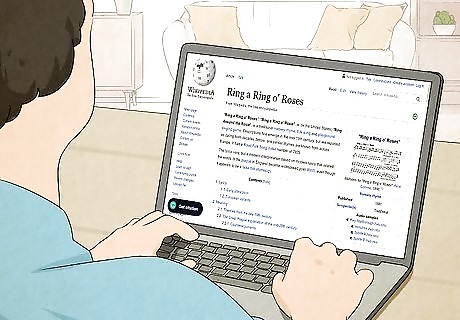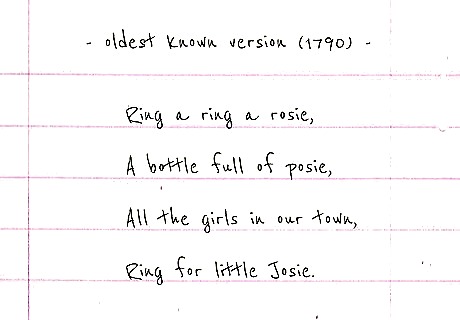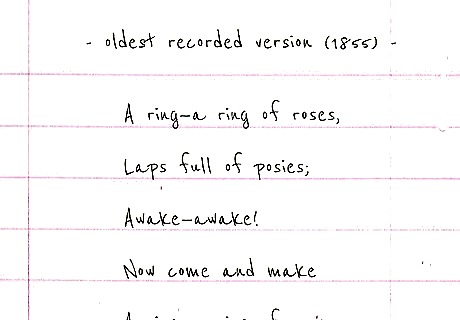
views
- “Ring Around the Rosie” may be an innocent child’s game, or it could be a lyrical allusion to the deathly plague of 1665.
- There are hundreds (if not thousands) of versions of “Ring Around the Rosie” out there, and their lyrics and interpretations may be affected by their publication dates.
- Read classic nursery rhymes with different contexts in mind to decipher the many interpretations and find allusions to historical events.
What is “Ring Around the Rosie” about?

“Ring Around the Rosie” could allude to the Great Plague of 1665. The Great Plague was the worst plague outbreak to hit England since 1348’s Black Death, in which London lost 15% of its population. Those with the bubonic plague would experience fevers, delirium, swelling, cramps, and bloody coughs. Some believe that the lyrics in “Ring Around the Rosie” are an allusion to this deadly time. The “rosie” or “roses” in the rhyme can be interpreted as a euphemism for plague fever rashes. The “pocket full of posies” may be directly linked to the flowers used to cover the stench of disease. “Ashes, ashes” is thought to represent the cremation of bodies. “We all fall down” could be a physical and verbal indication of death.

Some argue that “Ring Around the Rosie” is just a nursery rhyme. They say isn’t about the plague at all. The first known published record of the rhyme comes from the mid-1800s, 200 years after the Great Plague. Because of this, many historians and folklorists suspect that “Ring Around the Rosie” wasn’t about the plague but was actually just a sweet song for children to sing. The interpretation of the rhyme has changed over time, especially as we learn more about historical contexts and significant events. The interpretation of the rhyme as a nod to the plague is considered metafolklore, or the concept of interpreting folklore or traditional beliefs using other folklore and tales.
Versions of “Ring Around the Rosie”

The American version of the rhyme is the most common. This version features the phrase “Ashes, ashes,” which is often changed to “A-tishoo! A-tishoo!” in British versions. For children in America, this is generally the version of the rhyme they grow up singing and reading in books: Ring around the rosie,Pocket full of posies,Ashes, ashes,We all fall down!

The oldest known version claims to be published in 1790. Folklorists and historians have uncovered this bit of history in recent years, but there still isn’t enough evidence to prove that this version of “Ring Around the Rosie” is truly the oldest. Ring a ring a rosie,A bottle full of posie,All the girls in our town,Ring for little Josie.

The oldest recorded version was published in 1855. This version of “Ring Around the Rosie” is proclaimed the first written rendition of the rhyme, and features different lyrics and cadence to the classic rhyme we know today. A ring—a ring of roses,Laps full of posies;Awake—awake!Now come and makeA ring—a ring of roses.
Other Nursery Rhymes with Creepy Backstories

“Ring Around the Rosie” isn’t the only nursery rhyme with a dark meaning. Believe it or not, children’s fairy tales and folklore aren’t always about happily ever after. With historical and metafolklorist contexts, we’re able to decipher the meanings of these seemingly innocent stories. Take a look at some of these popular rhymes and their twisted historical interpretations: “London Bridge is Falling Down” may be about a human sacrifice and burying the remains in the foundation of a bridge. “Baa Baa Black Sheep” is said to depict the medieval wool tax that left nothing for anyone besides the king or church. “Jack and Jill” could allude to the French Revolution when Marie Antoinette was beheaded. “Humpty Dumpty” may be a crude depiction of King Richard III of England, who was defeated in 1485.



















Comments
0 comment